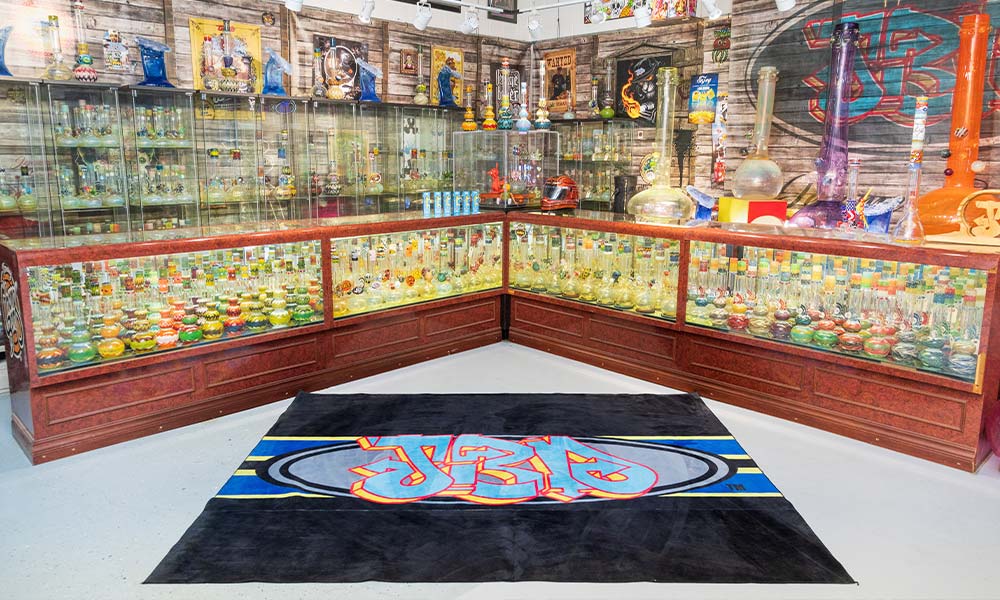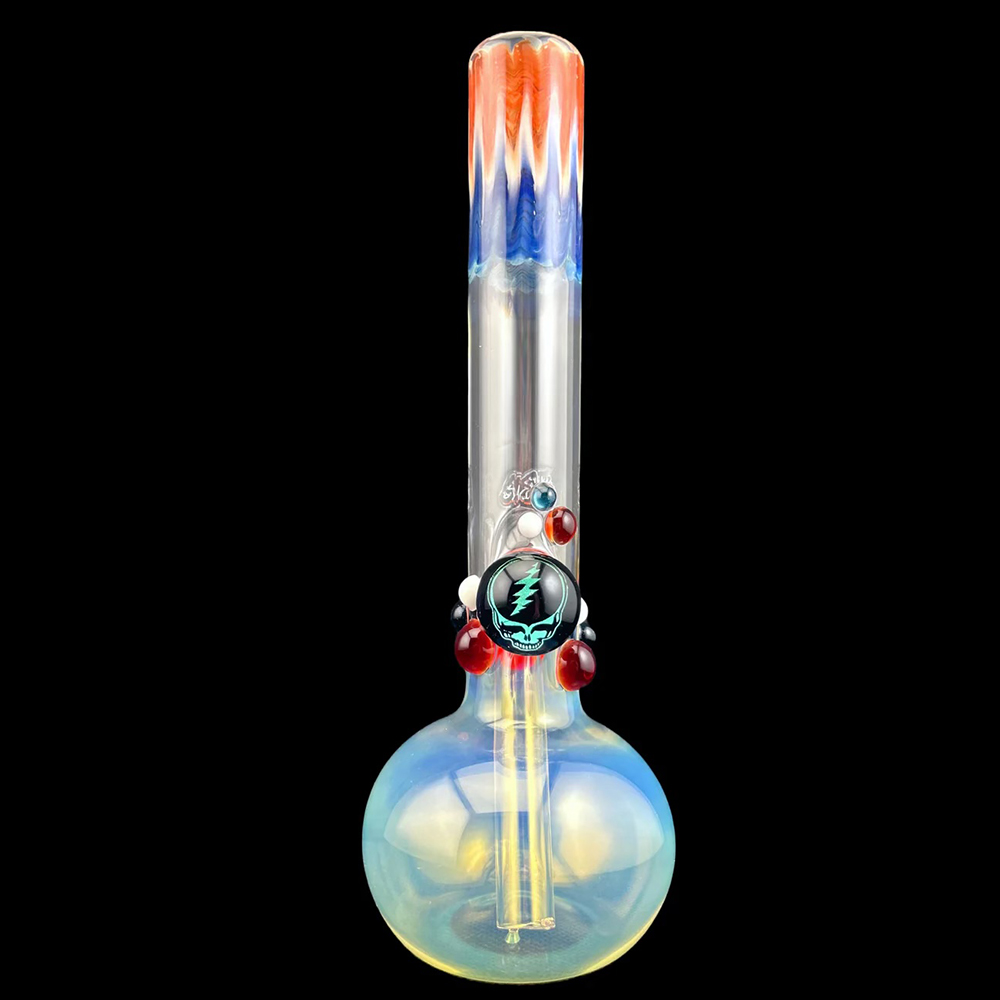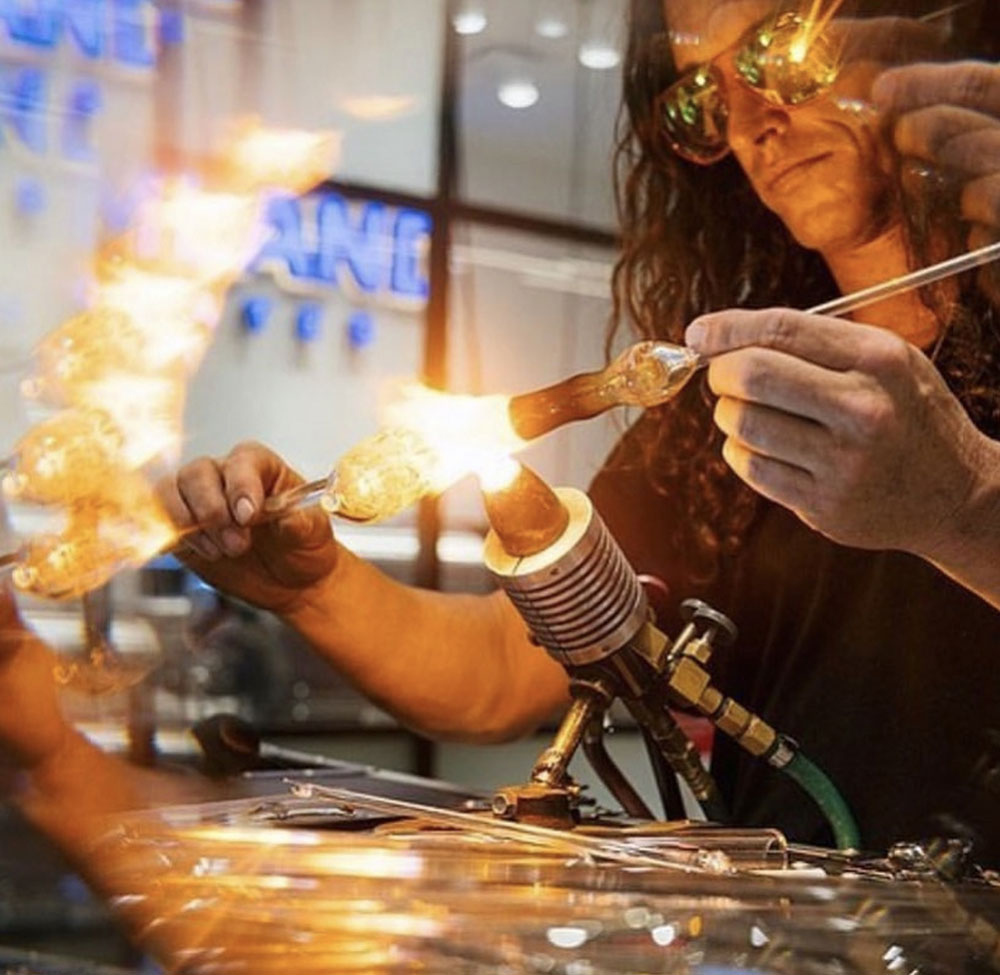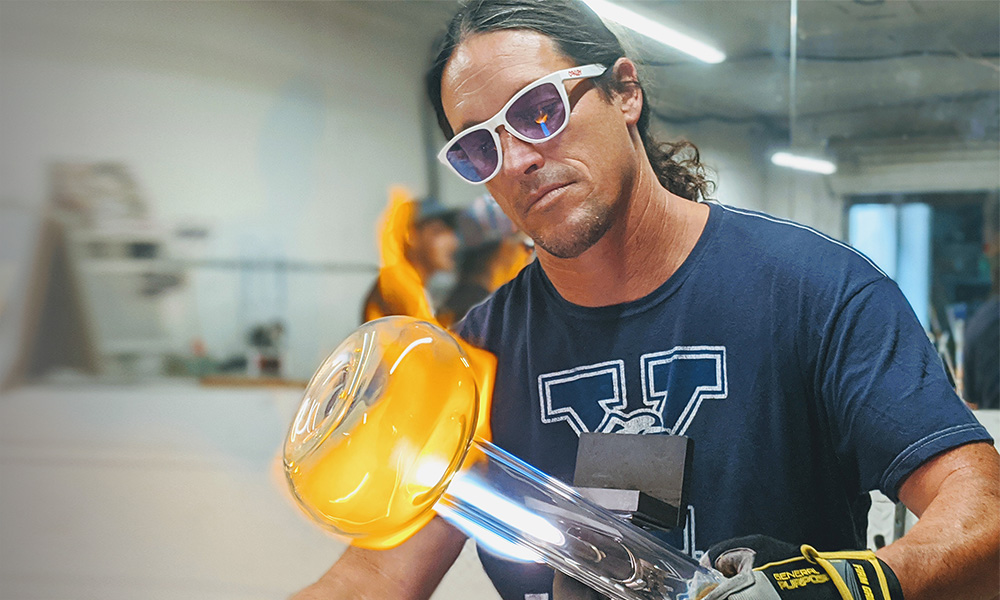The bong is so much more than just an object that looks cool and gets you high. The bong helps us create rituals in our lives. Just look around today—it seems as if Americans are lost. Cannabis culture can fill that void and inspire change in the world. The bong specifically can be a vehicle to that change. As a glass artist and co-founder of Jerome Baker Designs (JBD), it’s safe to say I’ve come to know the bong very well.
The life of a bong goes a little something like this: It gets purchased from a head shop and you name it, hide it from your parents, and bring it along in friends’ cars. That goes on for a certain amount of time until one day it gets broken or confiscated by the police. It’s a horrible feeling. A bong represents a person’s style. This applies across cultures, from hillbillies to hip-hop culture.
How Jerome Baker Designs Got Its Start
Today, Jerome Baker is considered the leader in American-made glass art. But before I became CEO of JBD, I was a college art student. During that time, I met an old man who lived down the street named Bob Snodgrass. He just so happened to be a world-renowned glass pipe innovator. His pipes were the first to change color the more you used them. I got connected with him, and he was always surrounded by some of the most interesting people in Oregon. I started learning to blow glass with that crew.
In the early days of JBD, my glassblowing partner Jordan Shefter and I would go door to door to frat houses banging on the doors during parties with a bag full of bongs for $125 wholesale and try to sell them. We grew the business from there. Nowadays, there are collector’s groups on Facebook where we connect with individuals. In some cases, JBD pieces have gone up twenty times in value over the years.
JBD quickly became a million-dollar business in the early nineties, and by 1999 it was a $4 million dollar business with 70 employees in Eugene, Oregon, which is a big city for outdoor recreation and the arts. We were making bongs that people recognized as art while staying true to what Jordan and I started in that college dorm room together.
We were making bongs that people recognized as art while staying true to what Jordan and I started in that college dorm room together.

JBD Gets Raided in Operation Pipe Dreams
On February 23, 2003, I got arrested in Operation Pipe Dreams alongside 55 other people, one of whom was Tommy Chong. There were many red flags before his arrest—people digging through garbage cans for evidence and the like. Eventually, JBD headquarters got raided. JBD staff was hogtied while the feds, state police, postal service police and more tore the place apart.
The police took everything. Our archived old website at the time was also confiscated. All our computers and the digital photos on them were taken, too. And then everything in the shop got confiscated, including glass. I had nothing left other than a camera with a disc in it. The photos on that camera are the only pre-raid photos that survived. In 2000, the feds auctioned off my old domain and I bought it back.
I was shocked. One day, Jerome Baker Designs had 70 employees, and the next day it was just a memory. The accused were arraigned in Pittsburgh, Pennsylvania to face federal charges. Tommy Chong ended up doing an entire year in federal prison. His cellmate was Jordan Belfort, the former stockbroker played by Leonardo DiCaprio in the movie “The Wolf of Wall Street.”
The Bush Administration, which was in charge at the time, ultimately used Tommy Chong and the justice system to make a political statement. The times have changed, but the law is still the exact same at the federal level: The cannabis industry is still illegal federally.

Building JBD Back Up
By the time Colorado legalized in 2012, JBD was back in action. Ever since the beginning, I knew that once this industry started going legal, that would be our chance to make a big push. We were smoking weed at the 2012 Cannabis Cup in Denver and realized that the time had come.
We had kept the brand alive in the skateboard sector. Anticipating Las Vegas would be a good place to do business, we set up shop in the Arts District, where we still make our pieces by hand to this day. Inside our studio, called the Las Vegas Dream Factory, we have a retail shop akin to Harry Potter’s wand shop—you can cruise in and see which piece speaks to you.
Since the beginning, Jerome Baker Designs has come a long way. In the early days, I was following American rock n’ roll legends Grateful Dead on tour with friends, blowing glass in the parking lots. When guitarist Jerry Garcia died, we decided to finally form a company and name it after him. Jerome is a nod to Jerry. Baker refers to getting baked. This was the Grateful Dead’s first venture into the premium cannabis glass space. This partnership is something JBD and the Grateful Dead had been talking about for a long time. The band and our brand go way back—they inspired it all. With cannabis legalization picking up steam nationwide, it seemed like a good time.
All these years later—after all those shows—it’s such a trip to be working with the Grateful Dead on high-quality glass cannabis products. Through this partnership, all Grateful Dead artwork featured on JBD bongs is officially licensed—it’s the real deal. These glass pipes and bongs are geared towards the everyday kind of a stoner, where people use the plant in an everyday fashion. It’s a cool take on what’s hot in the world of stoners and cannabis. From soccer moms to recording artists, everybody who’s using the plant daily should be able to access and use the glass smoking products we’ve created with the Grateful Dead. They’ve got the same old Jerome Baker Designs quality; we’re using the same designs we were using 30 years ago. They’ve stood the test of time. We still innovate, but we knew what we were doing back then, too.

The Big Picture
Cannabis is a massive play. Ancillary products in cannabis represented a $10 million industry last year. My vision centers around humanizing cannabis and making it part of everyday consciousness and conversation. Our glass pieces, after all, are conversation pieces at a time when more conversations are definitely needed. They prove thoughts and bring the sacred to life. We don’t talk about bongs as if they are paraphernalia. To us, they are pieces of art.


